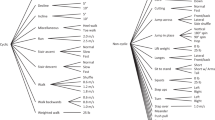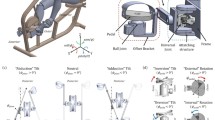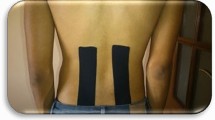Abstract
A low cost clinical exercise system was developed for the spinal cord injured, based on a bicycle ergometer and electrical stimulation. A pilot project was conducted, using the system, to examine the effects of stimulation induced cycling in long term paraplegics. The project comprised 2 phases of exercise, a strengthening phase involving a 12 week programme of electrical stimulation to the quadriceps and hamstrings and a 12 week cycling phase. Physiological, morphological and biochemical parameters were measured for each subject, at the beginning of the programme and following each phase. Results showed that a programme of stimulation induced lower limb exercise increased the exercise tolerance of all patients, as determined by a progressive increase in exercise time, cycling rate and exercise load. The enhanced exercise tolerance was a result of increases in local muscle strength and endurance. Increases in thigh muscle area and joint range of motion were recorded and all incomplete subjects reported an improvement in functional capabilities and general wellbeing.
Similar content being viewed by others

Log in or create a free account to read this content
Gain free access to this article, as well as selected content from this journal and more on nature.com
or
References
Guttman H L (1976) Spinal Cord Injuries - Comprehensive Management and Research. Blackwell Scientific, Oxford.
Petrofsky J S, Phillips C A (1984) The use of functional electrical stimulation for rehabilitation of spinal cord injured patients. Cent Nerv Sys Trauma 1(1): 57–73.
Petrofsky J S, Phillips C A, Stafford D E (1984) Closed loop control for restoration of movement in paralysed muscles. Orthopaedics 7: 1289–1302.
Petrofsky J S, Phillips C, Almedyha J, Briggs R, Couch W, Colby W (1985) Aerobic trainer with physiological monitoring for exercise in paraplegic and quadriplegic patients. J Clin Eng 10(4): 307–316.
Phillips C A, Petrofsky J S, Hendershot D M, Stafford D (1984) Functional electrical stimulation: a comprehensive approach for physical conditioning of the spinal cord injured patient. Orthopaedics 7(7): 1112–1123.
Glaser R M (1986) Physiologic aspects of spinal cord injury and functional neuromuscular stimulation. Cent Nerv Sys Trauma 3(1): 49–62.
Pacy P J, Hesp R, Halliday D A, Katz D, Cameron G, Reeve J (1988) Muscle and bone in paraplegic patients and the effect of functional electrical stimulation. Clin Sci 75: 481–487.
Ragnarsson K T (1988) Physiologic effects of functional electrical stimulation induced exercises in spinl cord injured individuals. Clin Orthop Rel Res 233: 53–63.
Ragnarsson K T, Pollack S, O'Daniel W, Edgar R, Petrofsky J, Nash M S (1988) Clinical evaluation of computerised functional electrical stimulation after spinal cord injury: a multicentre pilot study. Arch Phys Med Rehabil 69: 672–677.
Baker L L (1981) Neuromuscular electrical stimulation in the restoration of purposeful limb movement. In: Wolf SL, editor. Electrotherapy. Churchill Livingstone, New York: 25–48.
Benton L A, Baker L L, Bowman B R, Waters R L (1981) Functional Electrical Stimulation - A Practical Clinical Guide. Rancho Loss Amigos Rehabilitation Engineering Centre.
Alon G, Allin J, Inbar G (1983) Optimisation of pulse duration and pulse charge during transcutaneous electrical nerve stimulation. Aust J Physiother 29(6): 195–201.
Faria I, Cavanagh P (1978) The Physiology and Biomechanics of Cycling. John Wiley and Sons, New York.
Ericson M O, Nisell R, Arborelius U P, Ekholm J (1985) Muscular activity during ergometer cycling. Scand J Rehabil Med 172: 53–61.
Ramanathan N L (1964) A new weighting system for mean surface temperature of the human body. J Appl Physiol 19: 531–535.
Ingemann-Hansen T, Halkjaer-Kristensen J (1980) Computerised tomographic determination of human thigh components. Scand J Rehabil Med 12: 27–31.
Young A, Hughes I, Russell P, Parker M J, Nichols P J (1980) Measurement of the quadriceps muscle wasting by ultrasonography. Rheumatol Rehabil 19(3): 141–148.
Maughan R, Watson J, Weir J (1983) Strength and cross-sectional area of human skeletal muscle. J Physiol 338: 37–49.
Woodard H Q, White D R (1986) The composition of body tissues. Br J Radiol 59: 1209–1219.
Henson P W, Ackland T, Fox R A (1987) Tissue density measurement using CT scanning. Aust Phys Eng Sci Med 10(3): 162–166.
Kralj A, Bajd T, Turk R (1980) Electrical stimulation providing functional use of paraplegic patient muscles. Med Progr Through Technol 7: 3–7.
Trnkoczy A (1987) Functional electrical stimulation of extremities: its basis, technology and role in rehabilitation. Automedica 2: 59–100.
Noble P C (1981) The prevention of pressure sores in persons with spinal cord injuries. International Exchange of Information in Rehabilitation, New York.
Ottenbaher K J (1986) Evaluating Clinical Change - Strategies for Occupational and Physical Therapists. Williams and Wilkins, Baltimore.
Haggmark T, Jansson E Svane B (1978) Cross-sectional area of the thigh in man measured by computer topography. Scand J Clin Lab Invest 38: 355–360.
Block J E, Steinback L S, Freidlander A L, Steiger P, Wladislaw E, Morris J M et al (1989) Electrically stimulated muscle hypertrophy in paraplegia: assessment by quantitative CT. J Comput Assist Tomogr 13(5): 852–854.
Ackland T, Henson P W, Bailey D A (1988) The uniform density assumption: its effect upon the estimation of the body segment inertial parameters. Int J Sports Biomech 4: 146–155.
Borms J, Hebbelinck M, Carter J E L, Ross W D, Lariviere G (1979) Standardisation of basic anthropometry in Olympic athletes: the MOGAP procedure. In: Methods of Functional Anthropology. University Carolina Progensis: 31–39.
Pacy P, Evans R, Halliday D (1987) Effect of anaerobic and aerobic exercise promoted by computer regulated functional electrical stimulation on muscle size, strength and histology in paralegic males. Prosthet Orthot lnt 11: 75–79.
Kralj J A, Grobelnik S (1973) Functional electrical stimulation: new hope for paraplegic patients. Bull Prosthet Res 10: 75–102.
Marsolais E B, Kobetic R (1983) Functional walking in paralysed patients by means of electrical stimulation. Clin Orthop Rel Res 175: 30–36.
Fournier A, Goldberg M, Green B, Brucker B, Petrofsky J, Eismont F et al (1984) A evaluation of the effects of computer assisted muscle stimulation in paraplegics patients. Orthopaedics 7: 1129.
Holle J, Frey M, Gruber H, Kern H, Stohr H, Thoma H (1984) Functional electrostimulation of paraplegics: experimental investigations and first clinical experience with an implantable stimulation device. Orthopaedics 7: 1145.
Kralj A, Bajd T (1989) Functional Electrical Stimulation: Standing and Walking after Spinal Cord Injury. CRC Press Inc, Florida.
Pollack S F, Axen K, Speilholz N, Levin N, Haas F, Ragnarsson K T (1989) Aerobic training effects of electrically induced lower extremity exercise in spinal cord injured people. Arch Phys Med Rehabil 70: 214–219.
Munsat T, McNeal D, Waters R (1976) Effects of nerve stimulation on human muscle. Arch Neurol 33: 608–617.
Levine S, Kett R, Cederna P, Bowers L, Brooks S (1989) Electrical muscle stimulation for pressure variation at the seating interface. J Rehabil Res Dev 26(4): 1–8.
Levine S, Kett R, Cederna P, Brooks S (1990) Electric muscle stimulation for pressure sore prevention: tissue shape variation. Arch Phys Med Rehabil 71: 210–215.
Levine M, Knott M, Kabat H (1952) Relaxation of spasticity by electrical stimulation of antagonistic muscles. Arch Phys Med Rehabil 33: 673–688.
Shindo N, Jones R (1987) Reciprocal patterened stimulation of the lower limbs in severe spasticity. Physiotherapy 73: 579–582.
Author information
Authors and Affiliations
Rights and permissions
About this article
Cite this article
Bremner, L., Sloan, K., Day, R. et al. A clinical exercise system for paraplegics using functional electrical stimulation. Spinal Cord 30, 647–655 (1992). https://doi.org/10.1038/sc.1992.128
Issue date:
DOI: https://doi.org/10.1038/sc.1992.128


